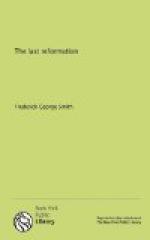Many timid-hearted Christians in the present age of religious toleration think that it is almost unchristianlike for us to bring up and lay to the charge of Rome such a sweeping indictment for those massacres of Christians in a barbarous age. Such it would be had Rome ever disavowed these acts or shown any signs of true repentance. The fact is that it is the boast of Catholics that “Rome never changes.” Well has Charles Butler said, “It is most true that the Roman Catholics believe the doctrines of their church to be unchangeable; and that it is a tenet of their creed, that what their faith ever has been, such it was from the beginning, such it is now, and such it ever will be.”
In a copy of the eleventh edition of “The Faith of Our Fathers,” by Cardinal Gibbons, page 95, I read: “It is a marvelous fact, worthy of record, that in the whole history of the church, from the nineteenth century to the first, no solitary example can be adduced to show that any pope or general council ever revoked a decree of faith or morals enacted by any preceding pontiff or council. Her record in the past ought to be a sufficient warrant that she will tolerate no doctrinal variations in the future.” So the doctrine of her inherent right to persecute and slay every one who disagrees with her, which has been enacted by popes and general councils and carried out in the past, is still in vogue.
“And I saw the woman drunk with the blood of the saints, and with the blood of the martyrs of Jesus.”
In our study of Revelation 12 and 13 we have observed that Rome in its twofold form—pagan and papal—is represented by the dragon and the beast respectively. This has been established so clearly as to remove well nigh all doubt concerning the identification. It will be profitable, however, to give brief consideration to certain parallel prophecies in Daniel; for in addition to covering the same ground and describing under other symbols the same general facts of history, they furnish us an infallible starting-stake, thus establishing definitely the truth of the interpretation concerning the Roman power, and giving us a solid basis from which we can proceed with logical certainty to the interpretation of other symbols in the Revelation.
[Sidenote: The image of Nebuchadnezzar’s dream]
In the second chapter of Daniel we have the narrative of a dream which Nebuchadnezzar, king of Babylon, had during the time of the Jewish captivity in that city. After the king awoke, he was so confused that notwithstanding the deep impression made by his nocturnal experience, he could not recall to mind the dream itself. He therefore had recourse to the Chaldeans and wise men of his realm. They failed to make known his dream, whereupon he became furious and decreed their death. At this juncture Daniel came forward and announced that if given time he would fulfil the king’s desire, and shortly afterward he appeared before the king and addressed him as follows:




